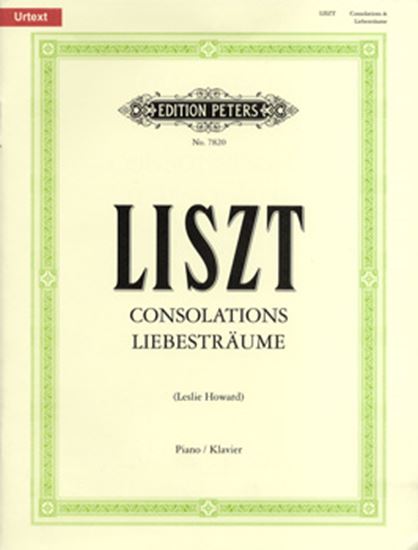Liszt, Franz : Consolations Lento placido Des-Dur S.172/3
Work Overview
Genre:character pieces
Total Playing Time:3 min 30 sec
Copyright:Public Domain
Commentary (1)
Author : Ooi, Kazurou
Last Updated: August 24, 2019
[Open]
Author : Ooi, Kazurou
This short piece does not require the kind of transcendental virtuosity found in other works by Liszt, but it is musically very challenging. Nevertheless, it is a very instructive piece. I believe that learners whose hands can span an octave should actively study this piece.
When performing this piece, typical pitfalls are listed below. Typical pitfalls include:
1. Playing 2 against 3, or 3 against 4, too precisely
In measures 4 and 5 (between beats 3 and 4), or in measure 6 (beat 4), the rhythms in both hands are written as 2 against 3 or 3 against 4. The more precisely a performer tries to play these rhythms, the more likely the performance will sound metronomic. This is especially true for performers who are afraid of rhythmic displacement. For example, the B-C-D♭-F in measure 4 should, of course, be played as 2 against 3. However, instead of carefully and precisely aligning these four eighth notes with the left hand, they should be played "as a single unit" in one swift motion. "In one swift motion" does not mean playing that section extremely fast. It means playing the four eighth notes together as a single group, without applying individual force to each note.
This might cause a slight (truly imperceptible) increase in tempo in that section, which the left hand should then follow. The same applies to beat 4 of measure 6. These sixteenth notes on beat 4 should be played in one swift motion. Do not align them precisely with the left hand, as this will make them sound stiff.
2. Stopping the Flow of the Left Hand
A typical tendency is to stop the flow of the left hand by playing it too cautiously, out of fear of making a mistake that would interrupt the flow. For example, in the opening three measures, reaching the bass notes in the left hand requires a wide span. Try to avoid taking up too much time and maintain the flow as much as possible.
Between measures 31 and 32, especially in measure 32, absolutely do not stop the flow. The same applies to measure 40. Do not take any unnecessary time. Drive the music forward towards the peak.
3. Balance
Pieces with rhythms like 2 against 3 or 3 against 4 tend to sound stiff even without other factors. In such cases, achieving balance between the left and right hands is essential. The left hand should play pp, while the right hand, being the melodic part, should be played with a full, rich tone. It is crucial to make the sound quality of these two voices distinctly different.
4. Octaves
There are countless instances where the music suddenly becomes stiff upon entering measure 20, despite being played beautifully before. The reason is simple: the melodic line becomes octaves. When playing octaves, reducing the volume to less than half will make them sound smoother.
5. Think of it as a Duet
For example, imagine an alto singer's melody beginning at measure 28, marked mezzo forte and espressivo.
In contrast, consider measure 30 as another melody sung by a soprano. The melody at measure 30 should begin quite softly and build with a crescendo towards the peak point at measure 34.
Similar sections include the melodic part from measure 45 and the melodic part at measure 49. In all these instances, consider them as duets and perform them as if sung by individuals with different vocal qualities.
For your reference.
PTNA & Partner Channel Videos(6items)
Sheet Music
Scores List (12)

KMP(ケイ・エム・ピー) ケイエムピー

(株)ドレミ楽譜出版社

(株)ヤマハミュージックエンタテインメントホールディングス

ハンナ(ショパン)

ハンナ(ショパン)

(株)ドレミ楽譜出版社

ハンナ(ショパン)

ハンナ(ショパン)

ハンナ(ショパン)

ハンナ(ショパン)

(株)全音楽譜出版社








